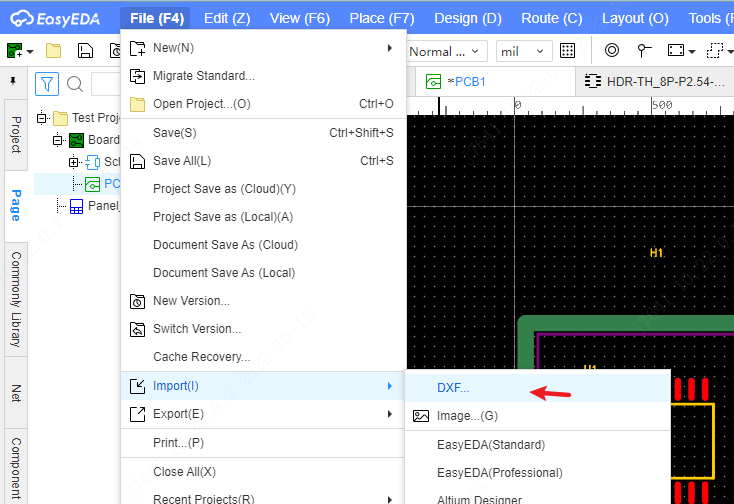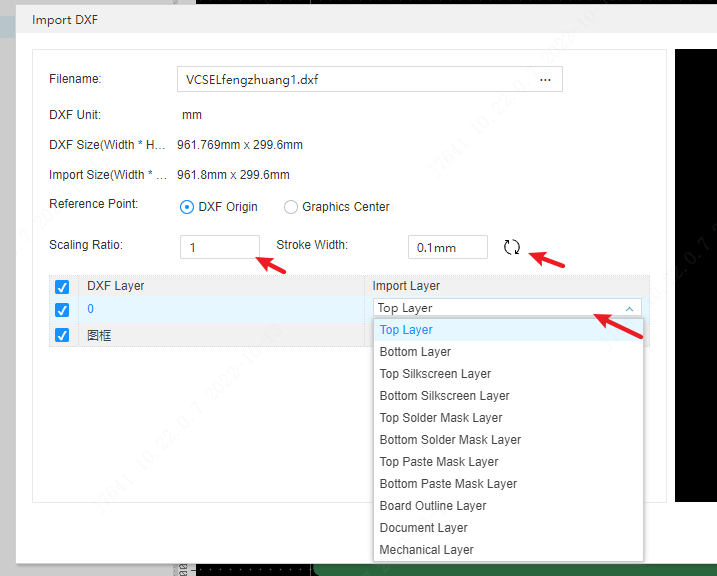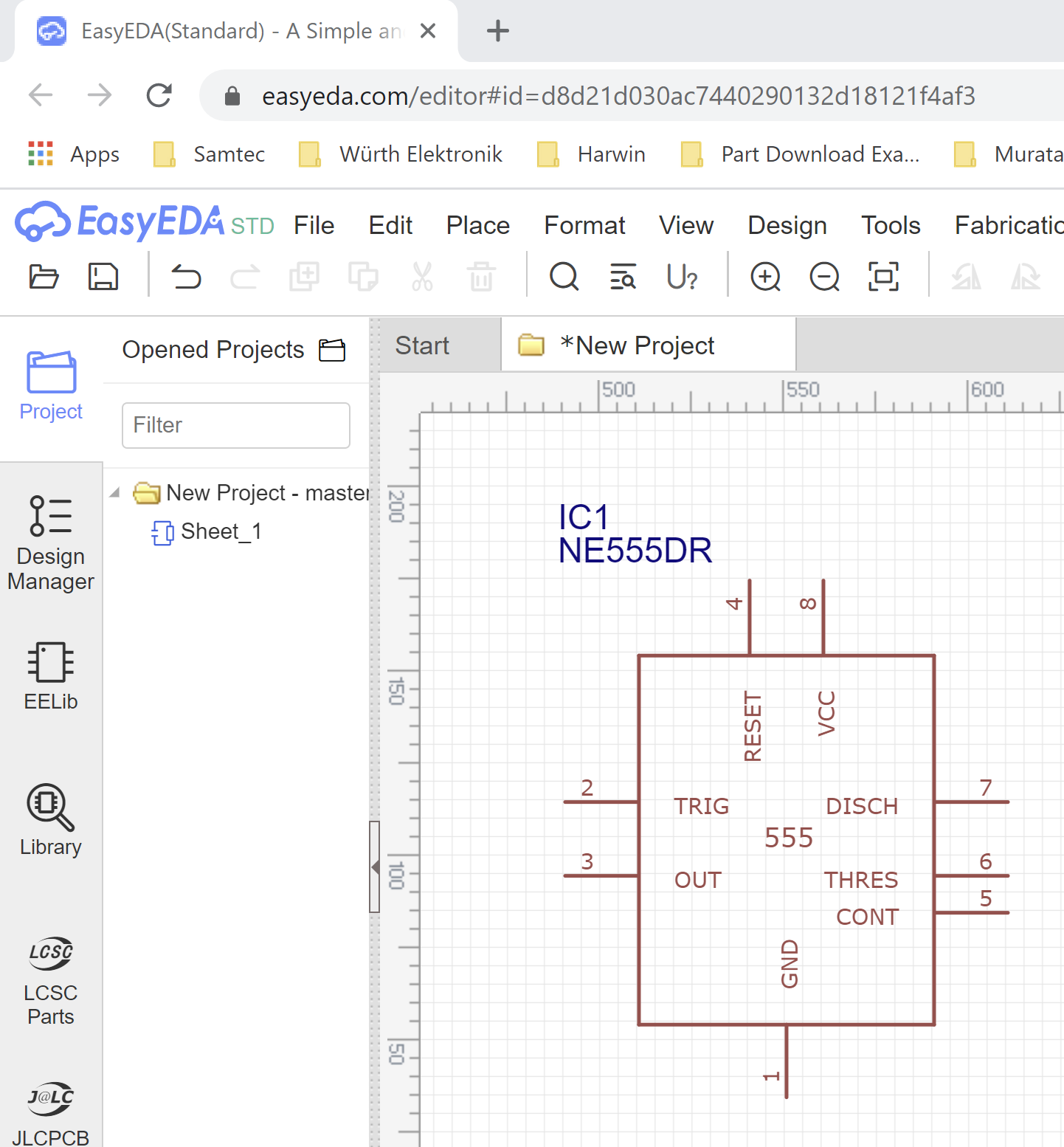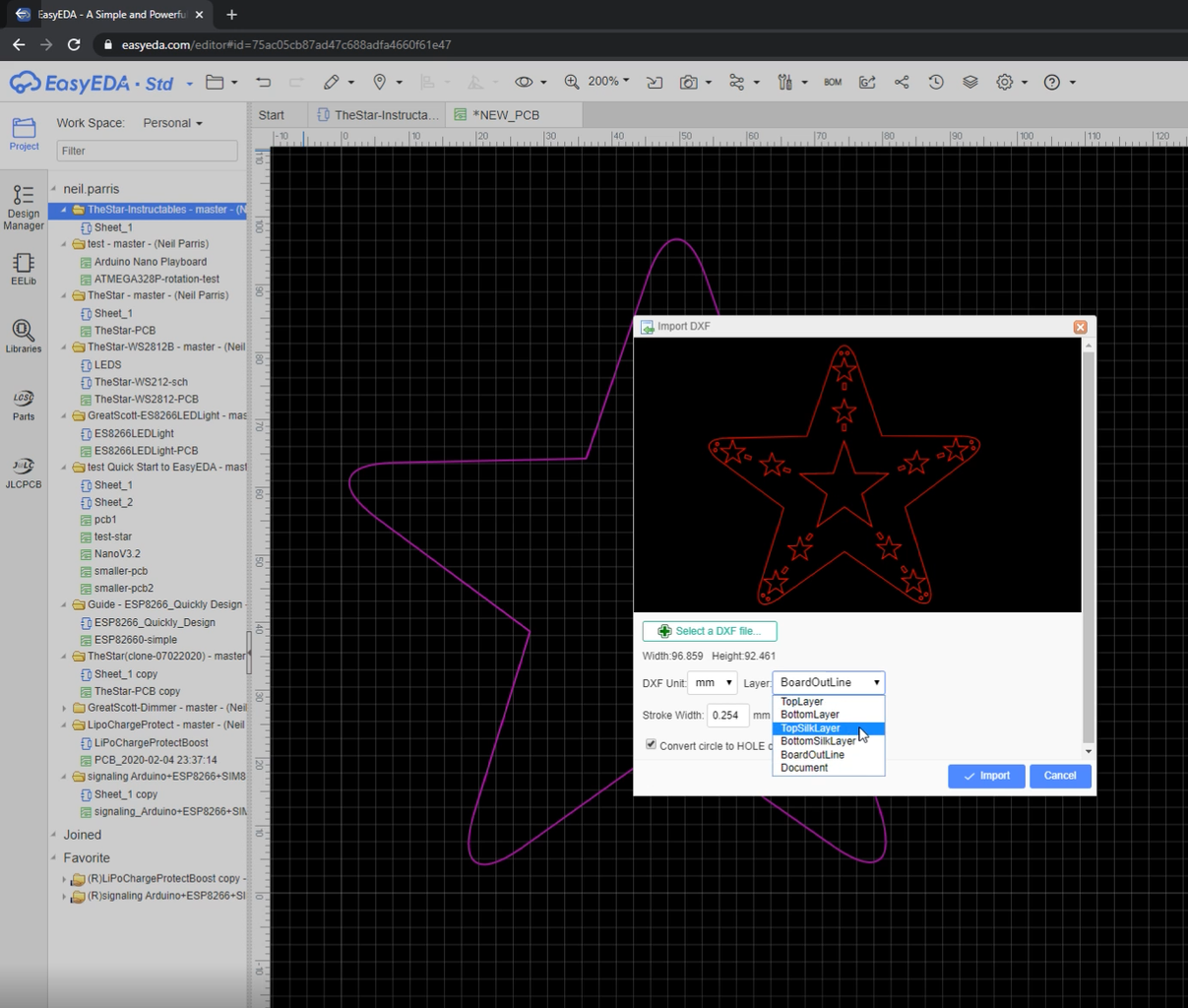Matchless Tips About How Do I Import A PCB File Into EasyEDA

Import DXF EasyEDA Pro User Guide
So, You've Got a PCB File — Let's Get it Into EasyEDA!
Alright, let's say you've got a shiny new PCB file, maybe from a colleague, a client, or even created yourself in another EDA tool. You're keen to open it up and work on it in EasyEDA, the popular web-based PCB design software. But, how do you actually do that? Don't worry, it's less daunting than wrestling with a particularly stubborn alligator. Well walk you through the process step-by-step. Think of this as your friendly guide to getting your design where it needs to be.
First things first, you'll need to understand what kind of file you're dealing with. Common PCB file formats include Gerber, Eagle (.BRD), Altium Designer (.PCB), and KiCad (.kicad_pcb). EasyEDA has different ways of handling these, so knowing your file type is essential. Trying to open a Gerber file like it's an Eagle BRD file is going to result in confusion and frustration — and nobody wants that!
So, whether you are collaborating with someone who uses a different software, inheriting an old project, or simply want to consolidate all your designs in one place, importing those files is a crucial skill. Ready to dive in? Let's get started. Well make sure its a smooth process, even if your PCB design skills are still a bit... circuitous (pun intended!).
Before we start, make sure you have an EasyEDA account (its free!) and are logged in. Let's prepare for liftoff! Prepare to get importing those PCB files into EasyEDA!
1. Importing Gerber Files
Gerber files are like the lingua franca of PCB manufacturing. They are a standardized, text-based format that describes each layer of your PCB design (copper layers, solder mask, silkscreen, etc.). They're what manufacturers use to actually make your boards. So, importing them into EasyEDA is often about verifying your design before sending it off for fabrication, or using them as a reference.
To import Gerber files, go to "File" -> "Import" -> "Gerber". A dialog box will appear, allowing you to select the Gerber files you want to import. Note that Gerber files often come as a set — you'll need to select all the relevant files for each layer (copper layers, silkscreen, solder mask, drill files, etc.). The import tool usually gives you some preview functionality to verify if the files are interpreted correctly. Take a moment to visually inspect the import to make sure everything lines up as expected.
It's crucial to correctly map each Gerber file to its corresponding layer in EasyEDA. This usually involves selecting the appropriate layer type (Top Copper, Bottom Copper, Top Solder Mask, etc.) for each imported file. Pay close attention here! If you mis-map a layer, you'll end up with a completely garbled PCB layout. Think of it like putting ketchup on your ice cream — technically edible, but definitely not the experience you're aiming for.
Gerber files can sometimes be a little tricky. Different EDA tools generate slightly different Gerber formats, so you might need to tweak the import settings (like aperture tables or coordinate system) to get everything to display correctly. If you're running into issues, consult the EasyEDA documentation or search the online forums. Chances are someone else has encountered the same problem and found a solution.
2. Importing Native Files (Eagle, Altium, KiCad)
If you have the original design files from another EDA tool like Eagle (.BRD), Altium Designer (.PCB), or KiCad (.kicad_pcb), you're in luck! EasyEDA can directly import these files, which is generally much easier and more accurate than importing Gerber files. This preserves more of the original design information, like component libraries and netlist connections.
The process is similar to importing Gerber files: Go to "File" -> "Import" and select the appropriate file type (e.g., "Eagle BRD", "Altium PCB", "KiCad PCB"). Choose the file you want to import, and EasyEDA will do its best to convert it into a format it can understand. This conversion process isn't always perfect, so be prepared to do some cleanup and verification.
One common issue you might encounter is component library mismatches. EasyEDA might not have the exact same components in its library as the original design. In this case, you'll need to map the components to equivalent parts in the EasyEDA library, or create new components if necessary. Think of it like translating between languages — sometimes you need to find the closest equivalent word or phrase.
After the import, carefully review the design to make sure everything is correct. Check for missing connections, misaligned components, and any other discrepancies. Use the EasyEDA design rule checker (DRC) to identify potential problems. Addressing these issues early on will save you headaches down the road.
3. Verifying and Cleaning Up Your Imported Design
No matter how you import your PCB file, it's essential to verify and clean up the design. Don't just assume that everything is perfect after the import! Take the time to thoroughly inspect the layout and ensure that everything is connected correctly and meets your design requirements.
Start by checking the netlist. The netlist defines how the components are connected together. Make sure that all the connections are intact and that there are no unintentional shorts or opens. You can use the EasyEDA netlist manager to visualize and edit the netlist.
Next, run a design rule check (DRC). The DRC will identify potential problems like trace width violations, clearance issues, and overlapping components. Fix any errors or warnings that the DRC reports. These checks are there to prevent you from manufacturing a board that doesn't meet the specifications, or worse, doesn't function at all.
Finally, visually inspect the layout. Zoom in on each component and trace, and make sure that everything looks correct. Pay attention to critical traces, like power and ground connections, and ensure that they are properly sized and routed. This step is about catching anything the automated checks may have missed.
4. Troubleshooting Common Import Issues
Importing PCB files isn't always a walk in the park. You might encounter various issues along the way, such as missing layers, incorrect component footprints, or connectivity problems. Here are a few common problems and how to troubleshoot them.
If you're missing layers after importing Gerber files, double-check that you've selected all the necessary files. Remember, each layer (copper, solder mask, silkscreen, etc.) is typically represented by a separate Gerber file. Make sure you've correctly mapped each file to its corresponding layer in EasyEDA.
Incorrect component footprints can happen when importing native files from other EDA tools. EasyEDA might not have the exact same component library as the original design. In this case, you'll need to map the components to equivalent parts in the EasyEDA library, or create new components if necessary. It may take some library management time, but it's essential to ensuring your designs function as expected.
Connectivity problems can occur when importing files with complex netlists. Double-check the netlist and make sure that all the connections are intact. Use the EasyEDA netlist manager to visualize and edit the netlist. Sometimes, re-running the design rule check (DRC) can highlight connectivity problems that you may have missed. If problems persist, you can check other forum to see if there are any solutions for it.
5. Wrapping Up
Congratulations! You've successfully imported your PCB file into EasyEDA. Now you can start editing the design, adding new features, and preparing it for manufacturing. Remember to always verify and clean up your design after importing to avoid any surprises down the road. With a little patience and attention to detail, you'll be designing PCBs like a pro in no time!
Importing a PCB file into EasyEDA — the process (noun) — isn't as hard as it sounds, and this guide should set you on the right path.



EasyEDA Std Import And Export FAQ User Guide

Learn How To Design A Custom Shaped PCB With EasyEDA Online Tools 12
